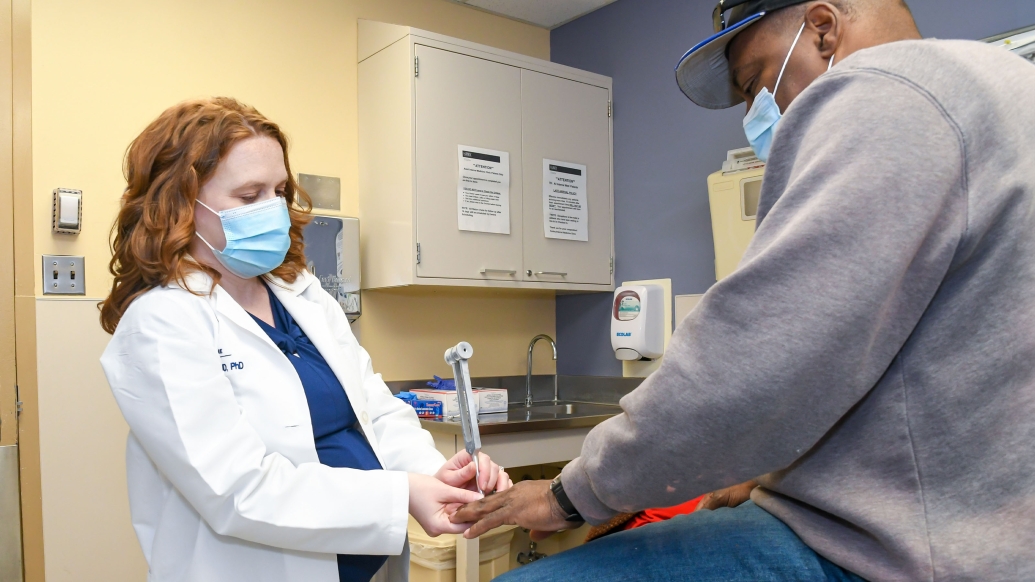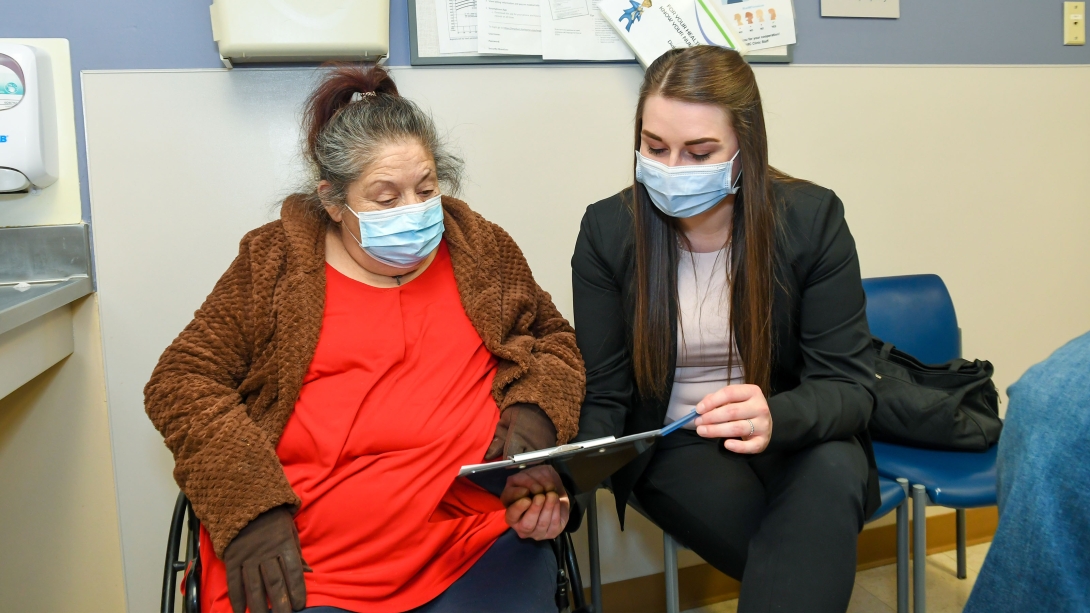Half of the patients had diabetes, which is a risk factor for neuropathy
5:00 AM
Author |

More than 20 million Americans have nerve damage in their extremities, a condition known as peripheral neuropathy.
For many people, this extends beyond numbness and tingling; more than one-third of patients experience sharp, prickling pain that increases rates of depression.
Some national studies estimate that 13.5% of the U.S. population has neuropathy.
However, a research team, led by Michigan Medicine and in partnership with Hurley Medical Center, finds that nearly three-quarters of patients at a clinic in Flint, Mich., a community that is predominantly Black and socioeconomically disadvantaged, had neuropathy — of which 75% was undiagnosed.
The results are published in Neurology, the medical journal of the American Academy of Neurology.
“There is significantly more neuropathy in this primary care setting than expected, suggesting we need to optimize risk factor management in this patient population to reduce the likelihood that they develop neuropathy,” said first author Melissa A. Elafros, M.D., Ph.D., Andrea and Lawrence A. Wolfe Research Professor of neurology at University of Michigan Medical School.
“The majority of neuropathy cases were initially undiagnosed despite the fact that over half of the participants reported symptoms of neuropathic pain. Partnering with community members and primary care providers is going to be key to determine why this gap in diagnosis exists and what can be done to address neuropathy risk factors to improve patient outcomes.”
Minority and low-income communities are often underrepresented in clinical research. Understanding this, Elafros and her research team set up at an outpatient clinic the predominantly serves Medicaid patients in Flint.
Of nearly 200 patients, 69% were non-Hispanic Black, nearly half had a household income below $20,000 and 37% reported food insecurity in the last three months. Through a series of clinical tests, researchers uncovered that 73% of participants had confirmed peripheral neuropathy.

Neuropathy was not the only chronic disease among participants. Over half had diabetes and two-thirds had metabolic syndrome, both of which are common risk factors for peripheral neuropathy.
The chronic diseases that were pervasive among participants were, unfortunately, often poorly controlled despite patients frequently seeing their doctors, said co-author Huda Marcus, M.D., internal medicine hospitalist at Hurley Medical Center.
“While the American Diabetes Association recommends that patients with diabetes are screened once a year for neuropathy, sometimes this can be challenging to implement in a busy clinical practice,” said co-author Thair Dawood, M.D., internal medicine physician at Hurley Medical Center.
Prior studies have shown that income below the national poverty level is associated with a greater risk for diabetes complications.
This collaboration did not come to the same finding, but researchers concluded that the sample size with 47% living under the poverty line may not have been large enough to properly assess the connection.
When looking at race, non-Hispanic Black participants at the Flint outpatient clinic were less likely to have peripheral neuropathy. The results run counter to a national study which showed that Black Americans were more likely than white Americans to have the condition.
Future research, Elafros notes, should be expanded to determine if the clinical findings represent the whole of Flint’s population. This should include also additional studies examining the “medical and socioeconomic drivers of neuropathy in a larger, diverse sample,” she said.
The study team has taken the first step towards accomplishing this goal by partnering with another outpatient clinic that serves a different group of patients in the Flint area.
When a person is diagnosed with neuropathy, clinicians follow guidelines to help address pain and limit the risk of falls and foot trauma. This can prevent downstream consequences such as anxiety and depression.
“While this study wasn’t designed to address the gaps in screening and treatment, a focus must be placed on fleshing out the barriers to effective diagnosis and management of neuropathy in the primary care setting,” said Brian Callaghan, M.D., M.S., senior author and the Eva L. Feldman, M.D., Ph.D., Professor of Neurology at U-M Medical School.
“This is currently a missed opportunity to provide pain management and risk factor modification that can improve patient outcomes. These interventions are urgently needed.”
Additional authors include Alexanndra Brown, M.P.H., Mousumi Banerjee, Ph.D., and Eva L. Feldman, M.D., Ph.D., all of University of Michigan, Peter J. Winch, M.D., M.P.H. of Johns Hopkins Bloomberg School of Public Health, Michelle P. Kvalsund, D.O., M.S., of University of Rochester and University of Zambia, and Lesli E. Skolarus, M.D., M.S., of Northwestern University.
This study was supported by the National Institutes of Health.
Paper cited: “Prevalence and risk factors for distal symmetric polyneuropathy among predominantly non-Hispanic Black, low-income patients,” Neurology. DOI: 10.1212/WNL.0000000000209390

Explore a variety of health care news & stories by visiting the Health Lab home page for more articles.

Department of Communication at Michigan Medicine
Want top health & research news weekly? Sign up for Health Lab’s newsletters today!





